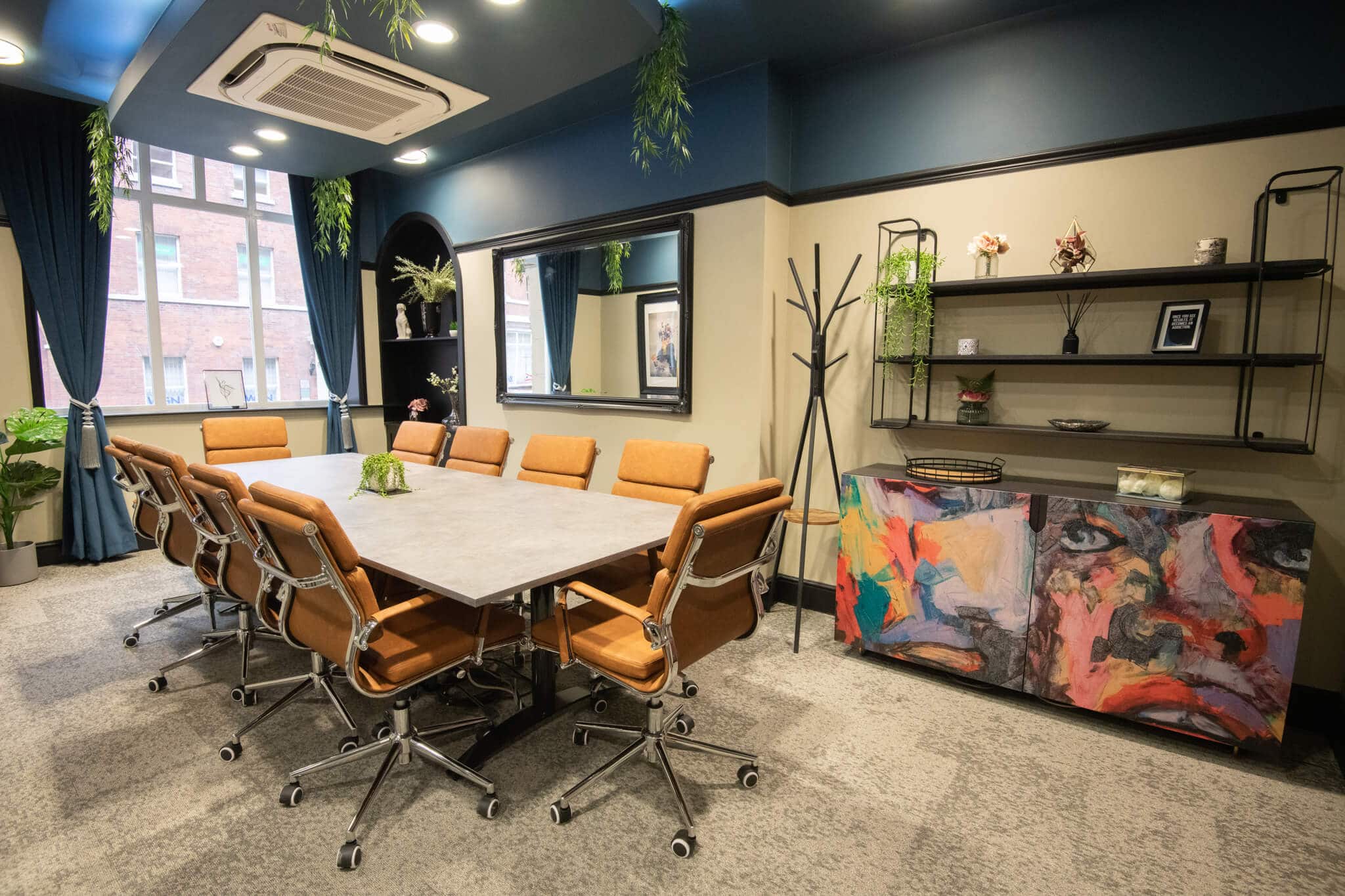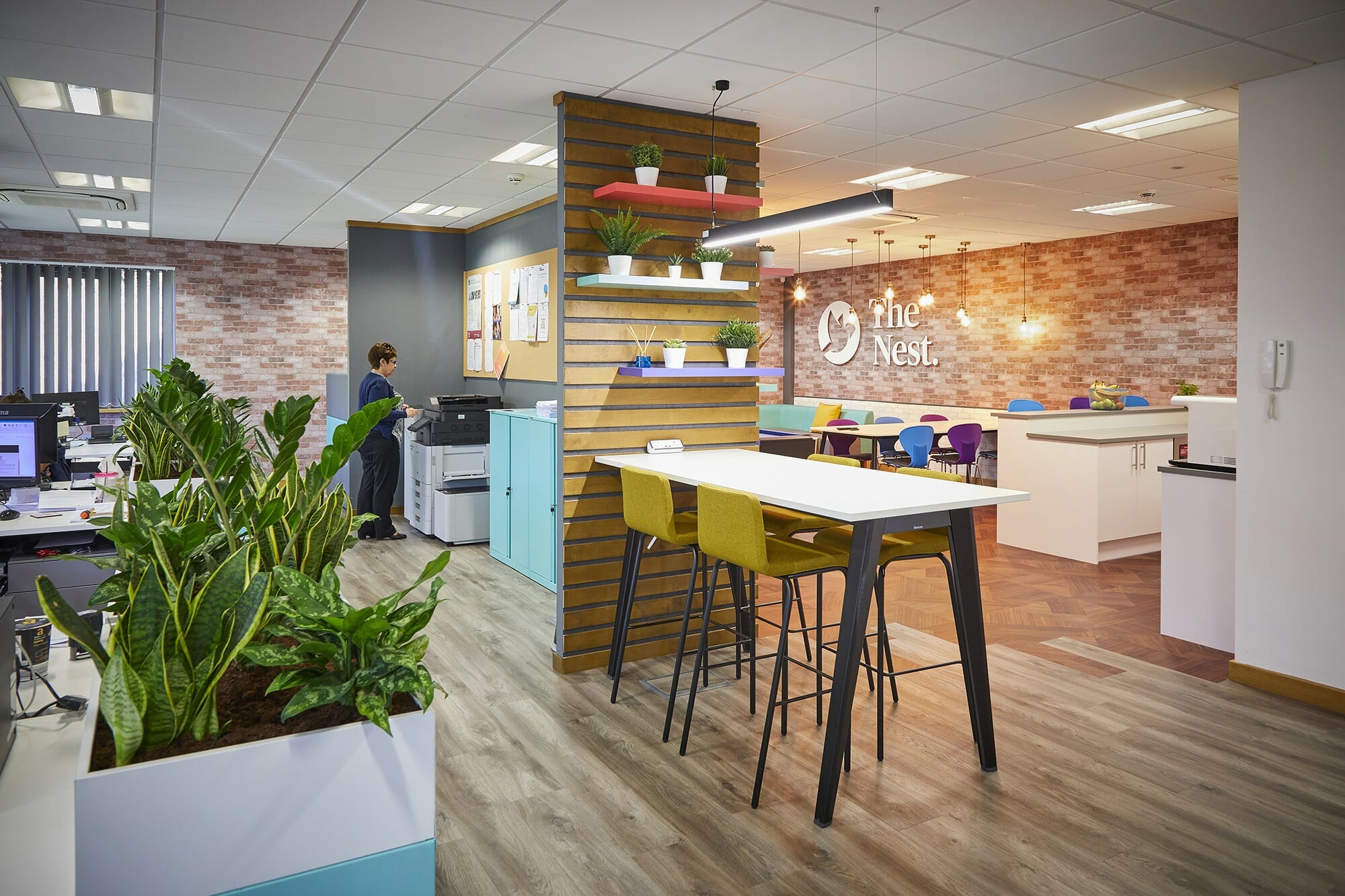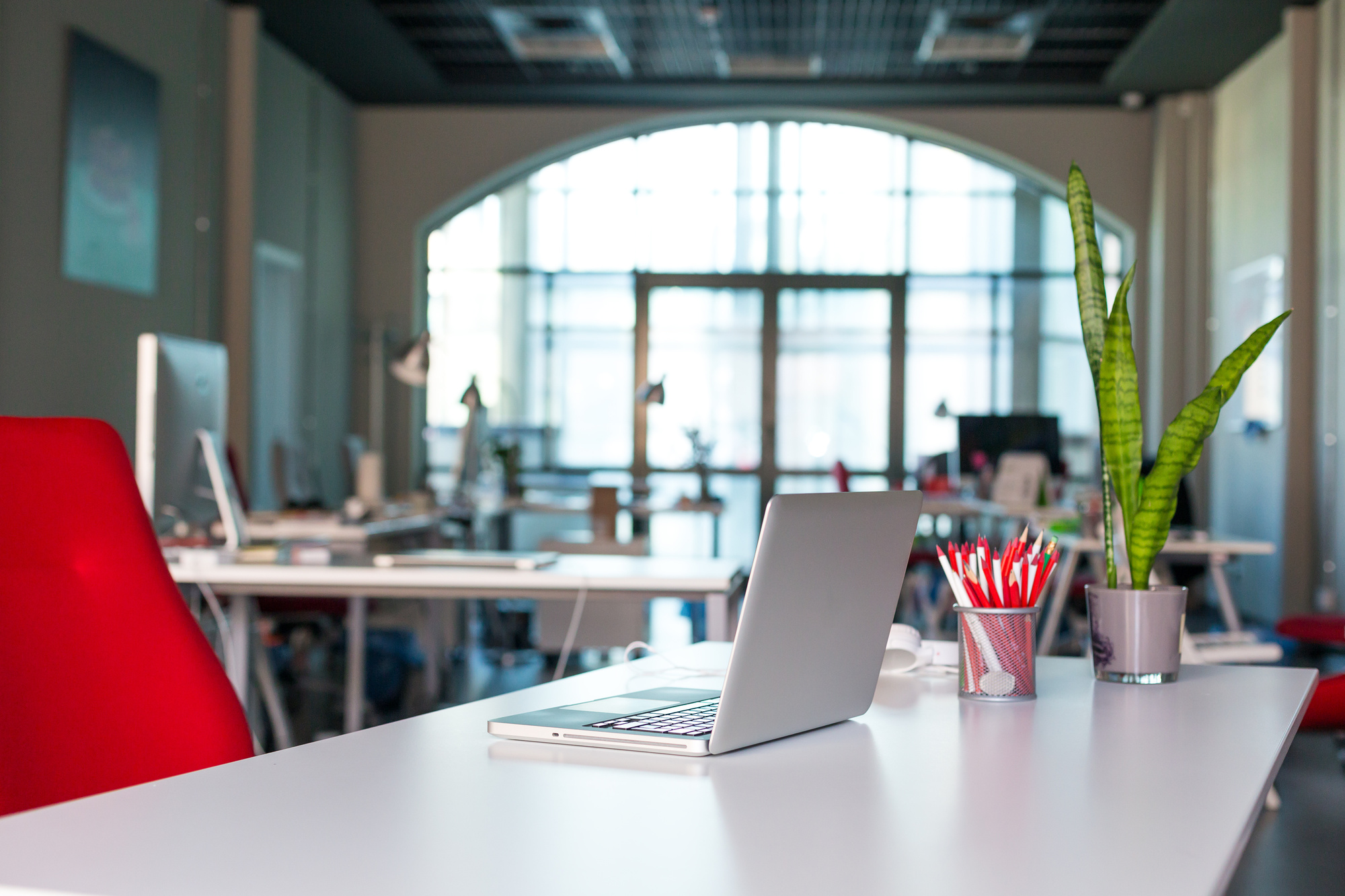Creative office environments are taking center stage as businesses recognize the crucial role they play in fostering innovation, productivity, and employee well-being. This article delves into the latest trends and best practices in designing creative workspaces that stimulate creativity, enhance collaboration, and promote a sense of well-being.
From incorporating natural elements and flexible workspaces to leveraging technology and creating collaborative spaces, we’ll explore the key elements that contribute to a creative and inspiring work environment. Whether you’re designing a new office or looking to revamp your existing space, this guide will provide valuable insights and practical tips to help you create a workplace that empowers your team and drives success.
Office Design Trends

Contemporary creative office environments are embracing innovative design trends that prioritize employee well-being, productivity, and creativity. Biophilic design incorporates natural elements like plants, sunlight, and natural materials to create a calming and restorative atmosphere.
Activity-based working allows employees to choose from various workspaces designed for different tasks, such as collaboration, focused work, or relaxation. Smart office technology, including sensors and automation, enhances efficiency and comfort by optimizing lighting, temperature, and space utilization.
Innovative Office Designs
- Google’s Mountain View campus features open and collaborative spaces with plenty of natural light, greenery, and recreational areas.
- Apple’s “spaceship” headquarters in Cupertino incorporates biophilic elements like a living roof and extensive use of glass to create a seamless connection with the outdoors.
- Amazon’s “Spheres” in Seattle are three glass-enclosed domes filled with lush vegetation, providing employees with a serene and inspiring work environment.
Benefits of Office Design Trends
- Improved employee well-being and reduced stress through biophilic design.
- Increased productivity and collaboration with activity-based working.
- Enhanced efficiency and comfort with smart office technology.
Collaborative Spaces

Collaborative spaces are vital for creative environments, providing a hub for brainstorming, idea generation, and team-based problem-solving. These spaces encourage interaction, communication, and the cross-pollination of ideas.
Different types of collaborative spaces serve specific functions. Brainstorming areas, often equipped with whiteboards or digital displays, facilitate spontaneous idea generation. Meeting rooms provide a more formal setting for structured discussions and presentations. Breakout zones offer a comfortable and informal environment for smaller groups to retreat for focused work or brainstorming sessions.
Successful Collaborative Spaces
Effective collaborative spaces share common characteristics. They feature a layout that promotes interaction and idea flow, with ample space for movement and group work. Amenities like comfortable seating, adjustable lighting, and access to technology enhance comfort and productivity.
Social dynamics also play a crucial role. Spaces that foster a sense of community and inclusivity encourage participation and creativity. Open communication, respect for diverse perspectives, and a culture of collaboration are essential.
Tips for Designing Collaborative Spaces
- Create a flexible layout that allows for different group sizes and activities.
- Incorporate a variety of seating options to accommodate different work styles.
- Provide access to natural light and ventilation to enhance well-being.
- Equip the space with tools for collaboration, such as whiteboards, digital displays, and video conferencing.
- Establish clear guidelines for space usage to avoid conflicts and maximize productivity.
By designing and managing collaborative spaces effectively, organizations can unlock the potential of their creative teams, fostering a culture of innovation and driving business success.
Natural Elements

Incorporating natural elements into the workplace has been proven to enhance creativity and productivity. Studies show that exposure to greenery, sunlight, and natural materials can reduce stress, improve mood, and stimulate cognitive function.
Offices that prioritize natural elements often feature:
- Large windows or skylights to maximize natural light.
- Indoor plants to purify the air and add a touch of nature.
- Natural materials such as wood, stone, and bamboo to create a warm and inviting atmosphere.
Example: Google’s Mountain View Headquarters
Google’s Mountain View headquarters is renowned for its innovative and eco-friendly design. The campus features abundant natural light, indoor gardens, and outdoor workspaces that promote creativity and collaboration.
Flexible Workstations
Flexible workstations empower creative individuals to customize their workspace, fostering comfort, productivity, and well-being. They enable seamless transitions between tasks and encourage collaboration and movement.
Different types of flexible workstations cater to diverse needs and preferences:
Adjustable Desks
- Allow users to adjust the height of their desks, promoting ergonomic posture and reducing physical strain.
- Enable individuals to alternate between sitting and standing positions, enhancing blood circulation and reducing fatigue.
Standing Desks
- Encourage movement and reduce sedentary behavior, promoting overall health and well-being.
- Enhance focus and concentration by reducing distractions and promoting a more active workspace.
Mobile Workstations
- Provide freedom of movement and collaboration, allowing individuals to easily reconfigure their workspace or move around the office.
- Facilitate impromptu meetings and encourage team-based problem-solving.
Technology Integration

In today’s creative workplace, technology plays a crucial role in fostering innovation and collaboration. By seamlessly integrating technology into office design, organizations can create an environment that empowers employees to think outside the box and produce exceptional work.
Interactive Whiteboards
Interactive whiteboards are a powerful tool for brainstorming, presentations, and team collaboration. They allow multiple users to work simultaneously on a shared digital canvas, making it easy to share ideas, sketch concepts, and annotate documents in real-time.
Creative office environments are designed to foster innovation and creativity. To take your creative office to the next level, consider seeking guidance from a creative consultancy. They can help you optimize your space, implement strategies to enhance collaboration, and create an environment that inspires your team to think outside the box.
By embracing the expertise of a creative consultancy, you can transform your office into a hub for groundbreaking ideas and exceptional outcomes.
Video Conferencing Systems
Video conferencing systems bridge the gap between remote and in-office teams, enabling seamless communication and collaboration. With high-quality video and audio, employees can participate in meetings, presentations, and workshops from anywhere, fostering a sense of inclusivity and breaking down geographical barriers.
Cloud-Based Collaboration Tools
Cloud-based collaboration tools provide a centralized platform for teams to share files, documents, and project updates. These tools enable real-time collaboration, allowing multiple users to edit and comment on shared documents simultaneously, regardless of their location. By eliminating the need for multiple versions and email attachments, cloud-based tools streamline communication and improve productivity.
Employee Well-being

Employee well-being is crucial for fostering creativity in the workplace. When employees feel comfortable, healthy, and supported, they are more likely to think outside the box and generate innovative ideas.
Factors Contributing to Employee Well-being
- Comfortable seating: Ergonomic chairs and desks promote physical comfort, reducing distractions and improving focus.
- Healthy snacks: Providing nutritious snacks throughout the day helps maintain energy levels and supports cognitive function.
- Access to natural light: Natural light has been shown to boost mood, reduce stress, and enhance creativity.
Examples of Improved Creativity from Employee Well-being
- A study by the University of California, Berkeley found that employees who worked in offices with natural light were 15% more creative than those in offices with artificial light.
- A survey by the American Psychological Association showed that employees who had access to healthy snacks reported higher levels of creativity and productivity.
Table: Key Factors Contributing to Employee Well-being and Their Impact on Creativity
| Factor | Impact on Creativity |
|---|---|
| Comfortable seating | Reduces distractions, improves focus |
| Healthy snacks | Maintains energy levels, supports cognitive function |
| Access to natural light | Boosts mood, reduces stress, enhances creativity |
Email to Employees Promoting Employee Well-being
Subject: Your Well-being, Our Priority
Dear Team,
Your well-being is paramount to our success. We understand that when you feel comfortable, healthy, and supported, you are more likely to be creative and innovative.
We have implemented several initiatives to enhance your well-being, including:
- Ergonomic chairs and desks
- Healthy snacks throughout the day
- Access to natural light in all workspaces
Please take advantage of these resources and prioritize your well-being. Your creativity and innovation are essential to our team’s success.
Thank you for your hard work and dedication.
Sincerely,
[Your Name]
Color and Lighting

Color and lighting are crucial elements that can significantly impact creativity in the workplace. Studies have shown that specific colors and lighting designs can stimulate creativity, enhance cognitive function, and boost productivity.
Color Schemes for Creativity
- Blue:Associated with calmness and serenity, blue hues can promote relaxation and reduce stress, creating a conducive environment for creative thinking.
- Green:Symbolizing nature and growth, green shades can evoke feelings of tranquility and inspiration, fostering creativity and innovation.
- Yellow:Known for its cheerful and optimistic qualities, yellow hues can boost energy levels and encourage a positive mood, enhancing creativity.
- Orange:Representing warmth and enthusiasm, orange shades can stimulate energy, spark imagination, and encourage collaboration.
Lighting Designs for Creativity
- Natural Light:Studies have consistently demonstrated the positive impact of natural light on creativity. It reduces eye strain, improves mood, and enhances cognitive function, leading to increased creative output.
- Task Lighting:Focused lighting directed at specific work areas can improve visibility and reduce eye fatigue, allowing individuals to concentrate and engage in creative tasks more effectively.
- Ambient Lighting:General lighting that provides overall illumination creates a comfortable and inviting atmosphere, supporting creativity by reducing shadows and glare.
Impact of Color and Lighting on Mood and Productivity
- Mood:Color and lighting can influence mood by triggering emotional responses. Warm colors like red and orange can energize and stimulate, while cool colors like blue and green can calm and relax.
- Cognitive Function:Studies have shown that specific lighting conditions can enhance cognitive function, including attention, memory, and problem-solving abilities, which are essential for creativity.
- Productivity:Well-designed color and lighting schemes can increase productivity by creating a comfortable and stimulating work environment. Natural light has been found to boost productivity by up to 25%.
– Explain the impact of poor acoustics and excessive noise on creativity, productivity, and overall well-being.

Poor acoustics and excessive noise can significantly hinder creativity, productivity, and overall well-being in creative environments. Constant distractions and a lack of focus can lead to reduced productivity, increased stress levels, and decreased job satisfaction.
Excessive noise can impair cognitive function, making it difficult to concentrate, remember information, and solve problems. It can also lead to fatigue, headaches, and irritability. Poor acoustics, on the other hand, can create echoes and reverberation, making it difficult to understand speech and concentrate on tasks.
Impact on Creativity
Noise and poor acoustics can hinder creative processes by:
- Reducing the ability to focus and concentrate
- Interfering with brainstorming and idea generation
- Making it difficult to collaborate and communicate effectively
li>Creating a stressful and uninspiring work environment
– Elaborate on the psychological and cognitive benefits of incorporating artwork and decor into the workplace.

Incorporating artwork and decor into the workplace has numerous psychological and cognitive benefits that can enhance creativity, productivity, and overall well-being. Artwork and decor can stimulate the senses, evoke emotions, and create a more inspiring and engaging work environment.
- Reduced stress and anxiety: Artwork and decor can create a calming and relaxing atmosphere, reducing stress levels and promoting a sense of well-being.
- Enhanced mood and emotions: Certain colors, patterns, and textures can evoke specific emotions, such as joy, excitement, or tranquility, which can positively impact employee mood and motivation.
- Increased creativity: Artwork and decor can provide visual stimulation and inspiration, fostering creative thinking and problem-solving.
- Improved cognitive function: Studies have shown that exposure to artwork and nature can improve cognitive function, including memory, attention, and concentration.
Outdoor Spaces
Incorporating outdoor spaces into creative office environments offers a range of benefits. They provide employees with access to fresh air, natural light, and a change of scenery, which can enhance creativity, productivity, and overall well-being. Outdoor spaces can take various forms, such as patios, gardens, and rooftop terraces.
Patios are typically located on the ground floor and provide a convenient way for employees to step outside for a break or a quick meeting. Gardens offer a more immersive experience, with lush greenery and flowers that create a tranquil and inspiring atmosphere.
Rooftop terraces, on the other hand, provide panoramic views and can be used for social events or team-building activities.
Case Studies

Case studies provide valuable insights into the successful implementation of creative office environments. By examining these examples, we can identify design elements and strategies that contribute to enhanced creativity, productivity, and employee well-being.
Google Headquarters, Mountain View, California
- Open and collaborative workspaces encourage cross-functional collaboration and idea-sharing.
- Natural light and greenery create a stimulating and inviting atmosphere.
- Flexible workstations allow employees to customize their workspaces to suit their needs.
- Technology integration, such as interactive whiteboards and video conferencing, facilitates seamless communication and idea development.
- Emphasis on employee well-being through amenities like on-site gyms, healthy food options, and meditation spaces.
Pixar Animation Studios, Emeryville, California
- Storytelling-themed design elements, such as murals and character sculptures, inspire creativity.
- Flexible workspaces with movable furniture allow for rapid reconfiguration to suit project needs.
- Collaboration zones, including brainstorming rooms and presentation areas, foster teamwork and idea exchange.
- Natural light and views of the surrounding landscape provide a calming and inspiring atmosphere.
- Employee well-being is prioritized through amenities like a rooftop garden, wellness programs, and a focus on work-life balance.
IDEO, Palo Alto, California
- Human-centered design principles guide the workspace design, with a focus on user experience and well-being.
- Collaborative spaces, such as prototyping labs and design studios, promote hands-on experimentation and idea development.
- Flexible workstations and reconfigurable furniture allow for dynamic team configurations.
- Technology integration supports collaboration and idea sharing, including virtual reality tools and digital whiteboards.
- Emphasis on employee well-being through amenities like healthy snacks, ergonomic furniture, and access to nature.
Emerging Trends

The future of creative office environments is shaped by emerging trends that prioritize employee well-being, productivity, and creativity. These trends include biophilic design, human-centric lighting, and flexible workspaces.
Biophilic Design
Biophilic design incorporates natural elements into the office environment, creating spaces that connect employees with nature. Benefits include improved air quality, reduced stress, and enhanced creativity. Potential challenges include maintenance and upkeep.
Human-Centric Lighting
Human-centric lighting optimizes employee well-being and productivity by using lighting to mimic natural daylight patterns. Benefits include reduced eye strain, improved sleep patterns, and increased alertness. Potential challenges include the cost of installation and maintenance.
Flexible Workspaces
Flexible workspaces adapt to different workstyles and needs, increasing employee satisfaction, improving collaboration, and reducing space requirements. Potential challenges include noise and distraction.
Key Innovations and Developments
- AI-powered space planning tools
- VR simulations for office design
- Wellness-focused amenities (e.g., fitness centers, meditation rooms)
- Smart furniture and technology
- Employee experience platforms
Conclusion
These emerging trends empower employees and drive success by creating workspaces that support well-being, productivity, and creativity. Embracing these trends and investing in future innovations will shape the future of workspaces.
Tips for Designing Creative Office Environments

To design creative office environments that foster innovation and productivity, consider these practical tips:
Furniture
- Choose comfortable and ergonomic furniture that supports different work styles and postures.
- Provide a mix of seating options, including chairs, sofas, and bean bags, to encourage movement and collaboration.
- Consider standing desks and adjustable workstations to promote physical well-being and reduce fatigue.
Lighting
- Maximize natural light by using large windows and skylights.
- Incorporate a variety of artificial lighting options, such as task lighting, ambient lighting, and accent lighting, to create different moods and atmospheres.
- Use dimmers and controls to adjust lighting levels based on the time of day and activity.
Layout
- Create open and flexible floor plans that allow for easy movement and collaboration.
- Use partitions, screens, and plants to define different work areas and create a sense of privacy when needed.
- Provide dedicated spaces for brainstorming, teamwork, and individual focus.
Natural Elements
- Incorporate plants, natural materials, and water features into the design to create a biophilic environment.
- Use natural light, ventilation, and thermal comfort to enhance employee well-being.
- Create outdoor spaces, such as rooftop gardens or patios, for relaxation and fresh air.
Collaboration, Creative office environments
- Designate specific areas for collaboration, such as meeting rooms, breakout spaces, and communal tables.
- Provide tools and technologies, such as whiteboards, video conferencing, and project management software, to facilitate teamwork.
- Encourage open communication and idea-sharing by creating a welcoming and inclusive atmosphere.
Stimulating Atmosphere
- Use bold colors, patterns, and textures to create a visually stimulating environment.
- Display artwork, photography, and sculptures to inspire creativity and provide a sense of place.
- Play music or soundscapes that are known to enhance mood and focus.
Metrics for Measuring Creativity: Creative Office Environments

Measuring creativity in the workplace can be challenging, but several metrics can provide insights into its impact.
Quantitative Metrics
- Number of new ideas generated:Track the number of innovative concepts, solutions, or products created.
- Patent applications and awards:Quantify the tangible outcomes of creative thinking.
- Sales of new products or services:Measure the commercial success of creative ideas.
Qualitative Metrics
- Employee surveys:Collect feedback on perceived creativity levels and the impact of the office environment.
- Observation and assessment:Observe and evaluate employee behaviors, such as collaboration, problem-solving, and risk-taking.
- Case studies and testimonials:Document specific instances where office design has fostered creativity and innovation.
Evaluating Impact
To evaluate the impact of office design on creativity, consider the following methods:
- Before-and-after comparisons:Compare creativity metrics before and after implementing design changes.
- Control groups:Use a control group of employees in a different office environment to isolate the effects of the new design.
- Longitudinal studies:Track creativity metrics over an extended period to observe the sustained impact of design changes.
Conclusion

To summarize, the design of an office environment plays a crucial role in fostering creativity, productivity, and overall employee well-being. By incorporating the key elements discussed in this article, organizations can create spaces that stimulate innovation, collaboration, and a sense of belonging.
It is essential to prioritize the well-being of employees by addressing factors such as acoustics, natural elements, and flexible workspaces. Moreover, the integration of technology, artwork, and decor can have positive psychological and cognitive effects on employees. By embracing the latest trends and best practices in office design, businesses can empower their workforce to thrive and reach their full potential.
Investing in creative office environments is not just an expense but an investment in the future success of an organization. By providing employees with spaces that inspire, motivate, and support their well-being, businesses can foster a culture of innovation and drive productivity.
As the workplace continues to evolve, it is imperative for organizations to embrace the transformative power of creative office design to stay competitive and achieve their business goals.
Expert Answers
What are the benefits of creating a creative office environment?
Creative office environments foster innovation, enhance productivity, improve employee well-being, and attract and retain top talent.
What are some key trends in creative office design?
Key trends include incorporating natural elements, creating flexible workspaces, leveraging technology, and fostering collaboration.
How can I measure the impact of my creative office design?
Metrics such as employee satisfaction, innovation output, and productivity can be used to evaluate the effectiveness of your office design.